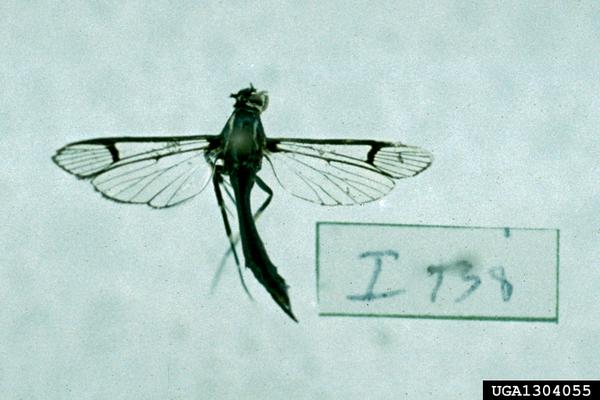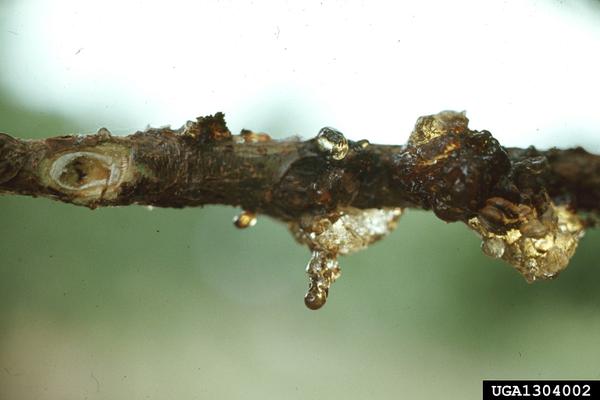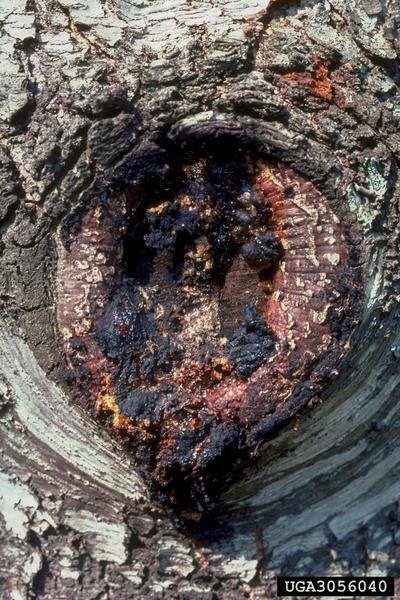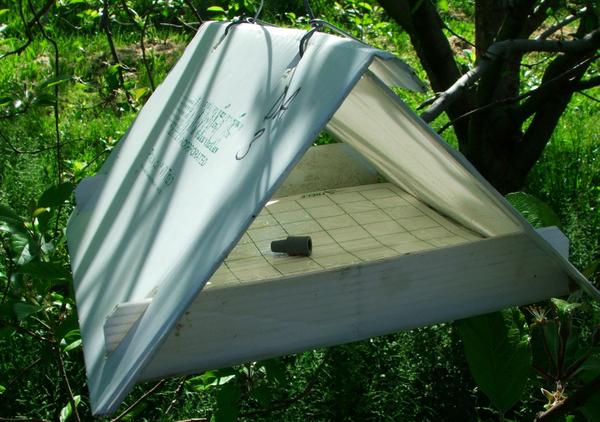Background and Description
Lesser peachtree borers (Synanthedon pictipes; LPTB) are clearwing moths, native to North America and capable of causing economically significant damage to peach, cherry, plum, nectarine, and apricot trees.
Adult LPTB strongly resemble small wasps, having dark blue bodies with yellow bands on the second and fourth abdominal segments and transparent wings outlined in dark scales. Wingspans range from 3/4 to 11/4 inches (19 to 32mm). Fully grown larvae are nearly 1 inch (25mm) long, cream to pink in color, and have light brown heads. Eggs are small, reddish-brown, and laid in groups of 400 in cracks near wounds in bark.
Life history
LPTB overwinter as partly-grown larvae in galleries underneath tree bark. In the spring, larvae feed briefly, pupate, and emerge as adults 3 to 4 weeks later. Unlike most moths, LPTB are active during the day, usually between mid-morning and mid-afternoon. Adults begin mating shortly after emergence, and females deposit eggs in large masses in the crevices of bark. Larvae hatch after about 9 days, immediately burrow into the bark, and begin feeding. A second generation of adults usually appears in August and September. There are typically two generations per year.
Damage
The larval stage of LPTB is an indirect pest of stone fruits. Unlike peachtree borer, LPTB often attacks parts of the entire tree rather than only the lower trunk. Usually they feed and develop in the inner bark and cambium, and infested sites will ooze gum contaminated with frass and bits of bored wood. Feeding damage may also cause bark to peel off in places, exposing the tree to other pests and diseases. Older trees, with more accumulated wounds, scars, and pruning cuts, are generally more likely to be infested than younger trees. Heavy infestations of LPTB can result in girdled branches and tree death.
Monitoring and Control
The presence of LPTB can be detected by inspecting scaffold wounds for the brown pupal exuviae left behind by emerging adults and by traditional pheromone traps.
Since LPTB larvae rapidly burrow into bark after hatching, foliar sprays are generally ineffective unless they are applied to coincide with egg hatch. Hatching is best estimated by using pheromone traps to monitor adult emergence and timing insecticide applications approximately 7 to 14 days after traps begin catching the first moths. A single low-pressure application that thoroughly wets all surfaces of the trunk and scaffold limbs is usually sufficient to ensure good control.
Publication date: Feb. 23, 2015
N.C. Cooperative Extension prohibits discrimination and harassment regardless of age, color, disability, family and marital status, gender identity, national origin, political beliefs, race, religion, sex (including pregnancy), sexual orientation and veteran status.






